A guide to Zambia
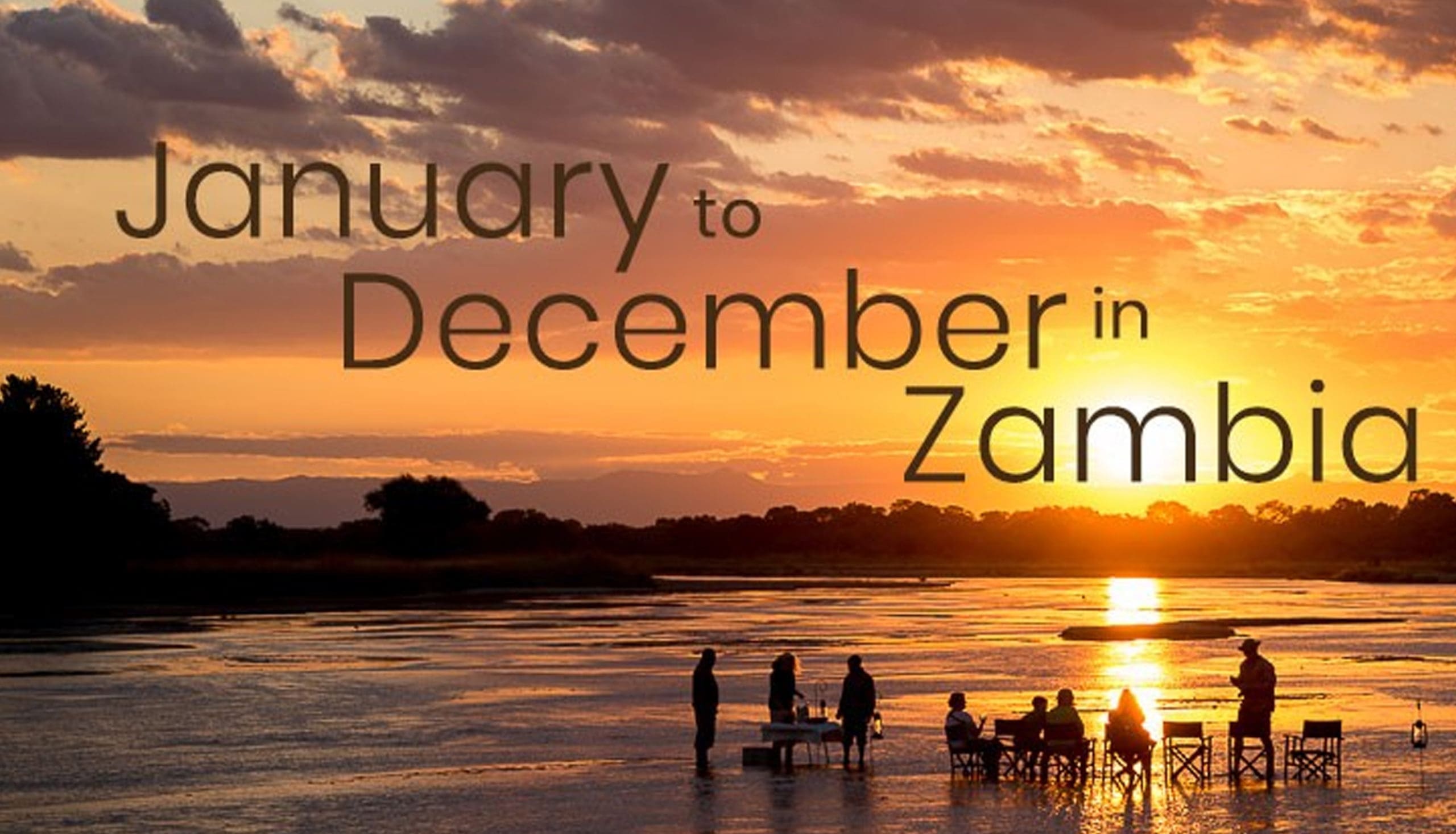
Zambia, the warm heart of Africa, has something for everyone whether that be for a family, a honeymoon couple, a keen birder, photographer, wildlife enthusiast or simply someone who wants to enjoy an incredible African experience. It has breathtaking vistas, phenomenal wildlife viewing, some of the best guiding in Africa, exceptional walking safaris, warm and welcoming people and some outstanding accommodation. Although largely visited in the dry season there are good reasons to visit outside of these times and below are some reasons why…
But before we head into a monthly overview, some handy information for you.
From the 1st of January 2022 Zambia reduced the cost of tourist visas by 50% to encourage tourism in 2022. The new costs are $25 for a single entry visa and $40 for a double entry.
New 1-hour PCR testing facilities have been set up at Lusaka Airport simplifying the process of being tested before your journey home, if indeed that is still necessary. The facility is operated by the Zambian Ministry of Health and Zambian Ground Handlers will of course help your guests through the process.
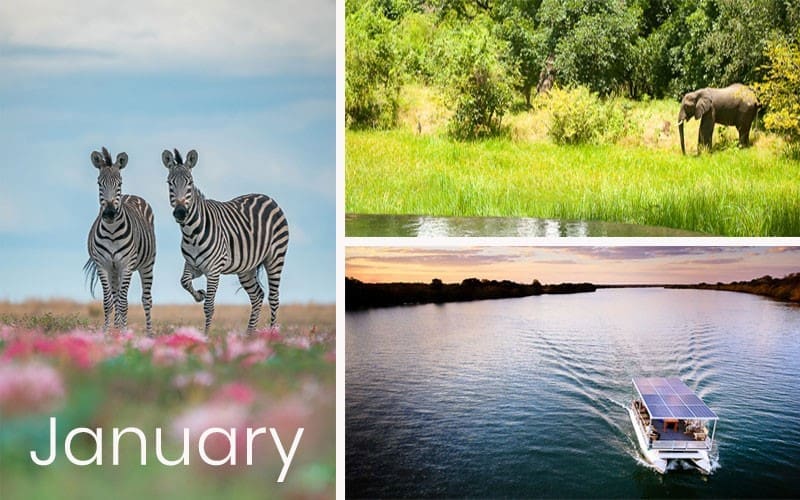
With the arrival of the early rains Luiwa Plains are looking beautiful. Herds of thousands of wildebeest and their calves can often be found around Time + Tide’s King Lewanika camp. The central game viewing areas of both the South Luangwa and the Kafue National Park are open, as are a couple of the Lower Zambezi options. The early rains have cleared the dust from the dry season making the air very clear, perfect for photography. There is also excellent birding in January as many of the migrants have arrived and are in breeding plumage and song.
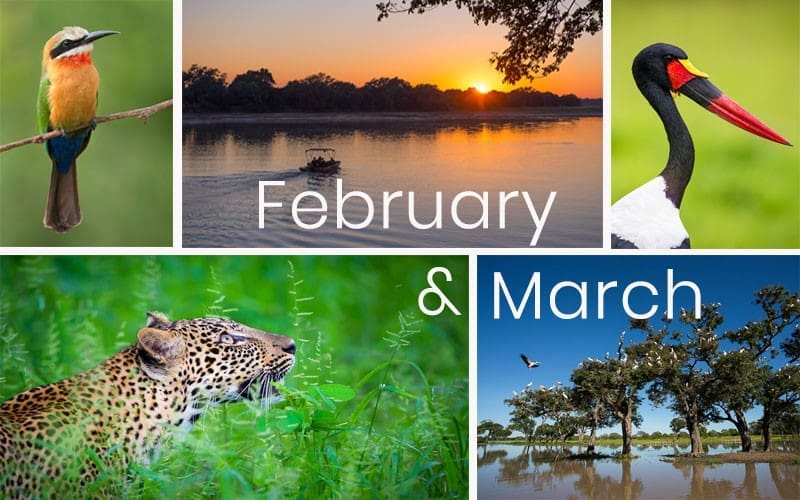
In the South Luangwa Time + Tide begin their ‘Secret Season’ and Robin Pope their ‘Emerald Season’ Safaris. These safaris combine both a central lodge with time in one of their remote bush camps, which are now only accessible by boat. Ebony groves become tributaries, ox bow lakes flood and the bush becomes green and lush. It is an incredible time to see the Luangwa from a completely different perspective and the birding is excellent during this time. In the months of February and March vast quantities of water are flowing over the Victoria Falls and the plume of the spray can be seen for miles.
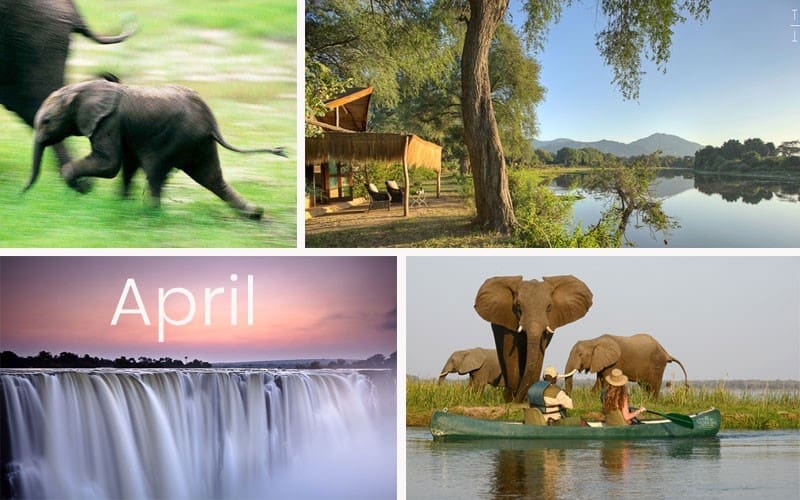
With the rains being more and more sporadic, the beginning of April sees a number of camps open in The Lower Zambezi and Chongwe, Sausage Tree and Potato Bush Camp start to welcome visitors. The Secret Season and the Emerald Season Safaris close in the South Luangwa and just the central Mfuwe areas remain accessible. In the Luiwa Plains the flood waters recede leaving pools of water and the park is full of birdlife, predators, plains game and wildebeest.
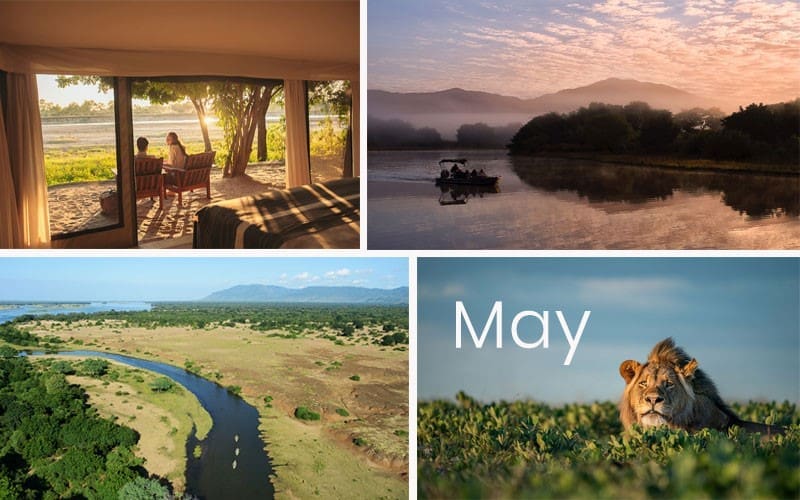
May is an exciting month as it marks the beginning of the dry season and everything is starting to open up. The South Luangwa Bush Camps are re-built and typically most are open by around 20th May/ 1st June. The remaining Lower Zambezi camps open on 1st May so that the park is fully operational from this month onwards. The Victoria Falls is reaching its peak as vast amounts of water flow over the falls making it almost hard to see them from up close, but still hugely impressive.
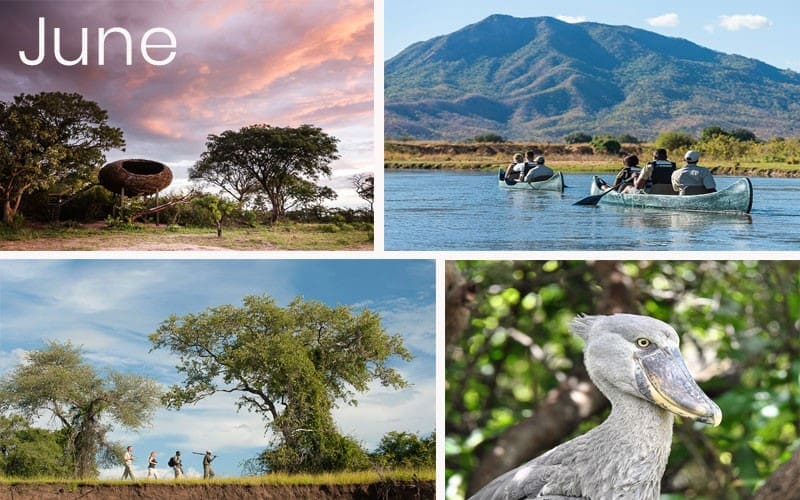
In June everything is now fully open in Zambia. The bush is still quite thick and green during this time, which does means you have to work a bit harder for your game viewing, but as it is not peak season you get the benefit of being able to enjoy wildlife sightings away from other visitors. In Bangweulu the early season months are good for Shoebill sightings, as the waters are still high and the Shoebill often come quite close to camp. Green Safaris and Wilderness open their camps in the Busanga Plains in the Kafue National Park, which combines very well with the central Kafue camps. June is still a good month to visit the Liuwa Plains – although as the month progresses the plains are beginning to dry up and the game populations start to disperse.
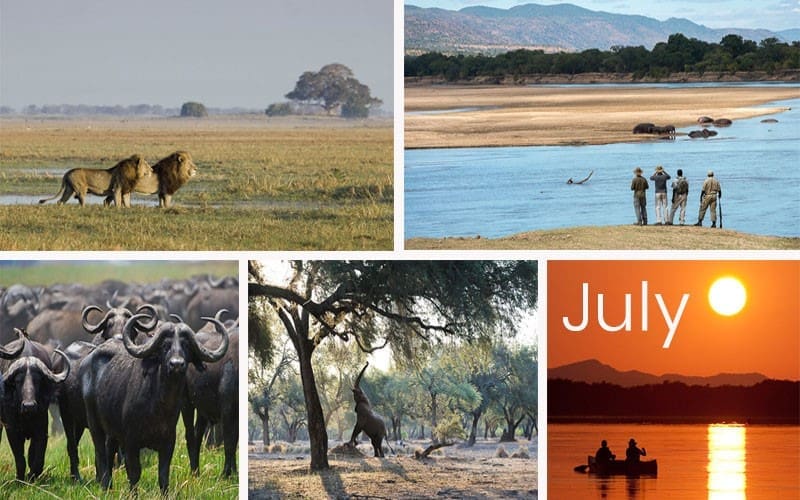
The temperatures are surprisingly cool in the mornings and evenings but the days are lovely and warm. The game is starting to congregate closer into the South Luangwa and the Lower Zambezi National Parks and it becomes more accustomed to game viewers making close up game encounters more likely. Shoebill sightings in the Bangweulu are still good and the Busanga Plains in northern Kafue is starting to come into its own and shine as the jewel in the crown of the Park.
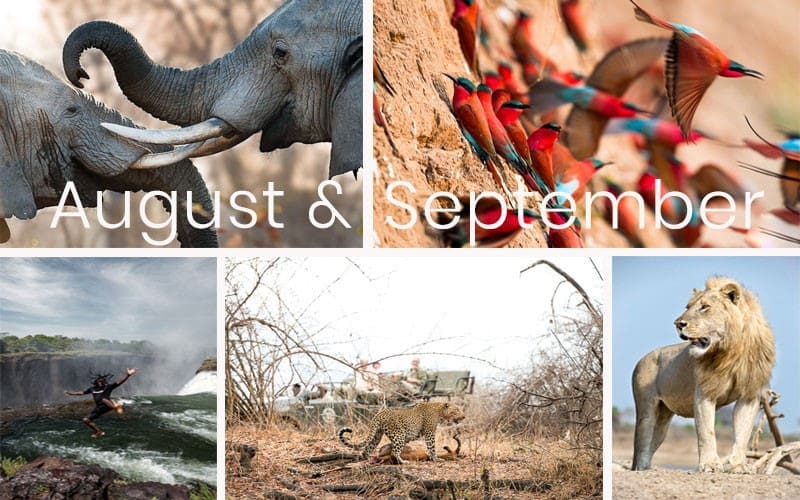
Temperatures start to increase and the bush becomes drier and drier. In August and September guests can enjoy excellent game-viewing throughout the South Luangwa, the Lower Zambezi and the Kafue. These are peak seasons months in Zambia and a perfect time to visit. The Carmine Bee-eaters arrive in the Luangwa and start building nests in the vertical sand banks. As water levels over the Victoria Falls have reduced Livingstone Island and the Devil’s Pool opens again.
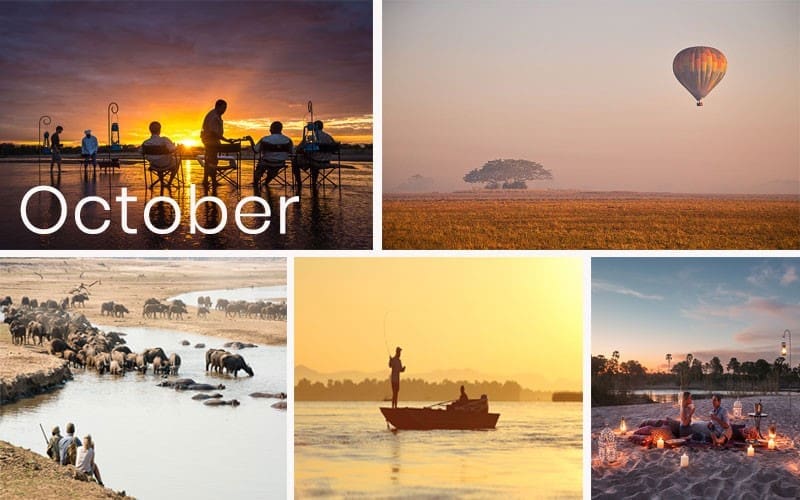
Day time temperatures can get up into the 40’s and the bush is at its driest before the rains break sometime in November. This leads to high concentrations of game along the rivers and any water sources, which leads to exceptional wildlife viewing with predator action becoming dramatically prolific. All camps in the country are open and some regard this month the best outstanding pure game-viewing experiences.
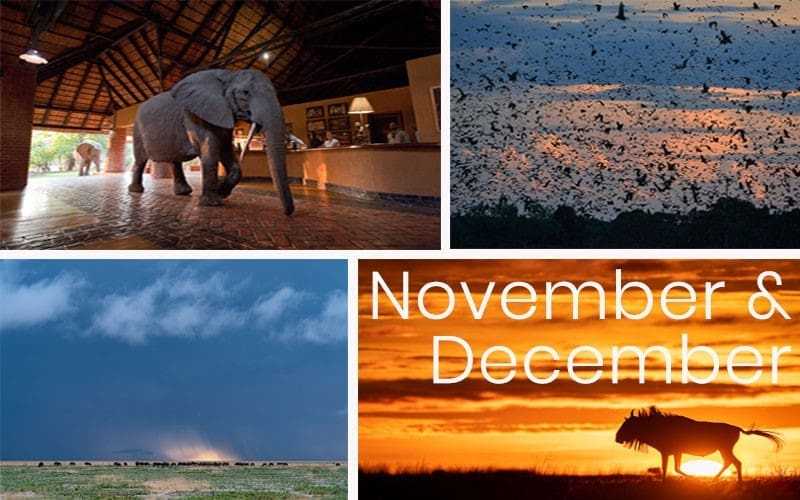
The rains could start at anytime in November or December. Typically there will be a couple of big, dramatic storms to herald the new season, these in themselves are a wonderful spectacle and quite an experience. The largest mammal migration of Fruit Bats arrives in Kasanka in early November and are in residence through until mid-late December.
Liuwa Plains has another peak season as the wildebeest have their “mini-migration” across the Plains and most importantly they begin to calve which is quite a spectacle. In mid-November/ December (December is the best month to witness this) the elephant start to walk through the reception at Mfuwe Lodge in the South Luangwa to reach the wild-mango trees beyond. Fresh colours and new water make these months great for photography and migrant birds start to arrive and display song and plumage for breeding so also a great time for birders.


